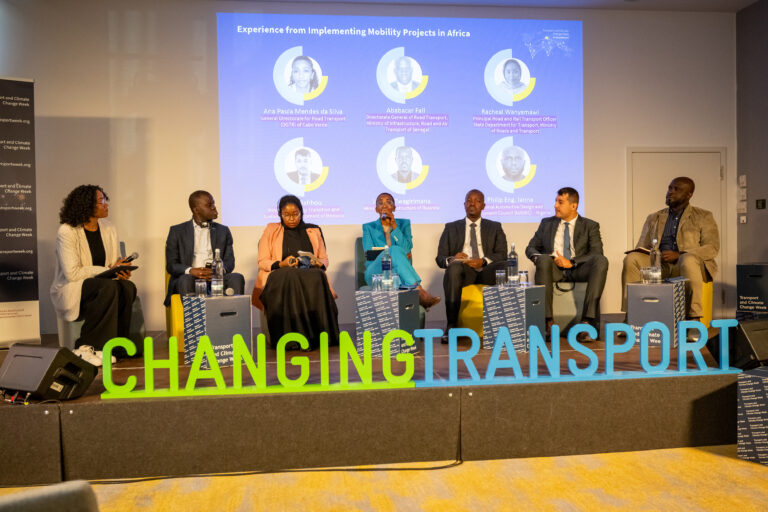G20 Ministers Meet to Promote Open, Inclusive Innovation – 中国科技网

G20 Ministerial Meeting Emphasizes Science, Technology, and Innovation for Achieving Sustainable Development Goals
Meeting Overview and Core Mandate
On September 23, ministers and senior officials for Science, Technology, and Innovation (STI) from G20 nations and invited countries convened in Tshwane, South Africa, for the G20 Research and Innovation Ministerial Meeting. The meeting’s theme, “Science, Technology and Innovation for Solidarity, Equality and Sustainability,” underscored the critical role of international cooperation in addressing global challenges and advancing the 2030 Agenda for Sustainable Development. The consensus was that collaborative partnerships, in line with SDG 17 (Partnerships for the Goals), are essential for building an inclusive and sustainable global innovation ecosystem to achieve shared prosperity.
China’s Commitment to Open Science for Sustainable Development
The Chinese delegation, led by Minister of Science and Technology Yin Hejun, affirmed that open, inclusive, and people-centered international scientific cooperation is fundamental to promoting sustainable development and achieving SDG 10 (Reduced Inequalities). China’s recent contributions to this global effort include:
- Launching the International Science and Technology Cooperation Initiative and the Initiative on International Cooperation in Open Science to foster an open innovation environment.
- Implementing the Belt and Road Science, Technology and Innovation Action Plan, which supports SDG 9 (Industry, Innovation, and Infrastructure).
- Expanding shared access to research infrastructure and large scientific instruments, directly contributing to SDG 17.
- Promoting civil scientific exchanges and talent cooperation to enhance SDG 4 (Quality Education).
- Engaging in global governance on critical topics such as AI and research ethics to ensure responsible innovation.
The Tshwane Package: A Framework for SDG-Aligned Innovation
The meeting resulted in the approval of the “Tshwane Package,” a comprehensive suite of recommendations and initiatives designed to leverage STI for the SDGs. Key components of the package include:
- Strengthened Science Engagement: Fostering public trust, participation, and literacy in science to ensure informed and inclusive decision-making.
- G20 Open Innovation Architecture: Creating a multi-platform framework to facilitate voluntary cross-border knowledge sharing, reinforcing SDG 17.
- Open-Innovation Demonstration Project: A focused initiative on disaster risk reduction and water security, directly addressing SDG 6 (Clean Water and Sanitation), SDG 11 (Sustainable Cities and Communities), and SDG 13 (Climate Action).
- Global Biodiversity Data Cooperation: Supporting the development of a catalogue of life to advance SDG 14 (Life Below Water) and SDG 15 (Life on Land).
- Gender Equality in STI: Promoting the empowerment of women and girls in science and technology fields, in alignment with SDG 5 (Gender Equality).
- Diversity, Equity, Inclusion, and Accessibility (DEIA): Establishing a compendium of good practices and a thematic portal to advance DEIA in STI, contributing to SDG 10.
Key Thematic Discussions and Global Consensus
Discussions during the meeting centered on leveraging open innovation and biodiversity information for sustainable development, alongside policies to improve DEIA in science. As the G20 presidency, South Africa has organized a series of meetings focused on critical SDG-related areas, including:
- Climate (SDG 13)
- Food Security (SDG 2)
- Water (SDG 6)
- Energy (SDG 7)
- Bioeconomy and the use of AI for sustainable development
Representatives from UNESCO, the OECD, and other international organizations joined G20 delegates in reinforcing the message that no single country can tackle urgent global problems alone. Building an inclusive, sustainable global innovation ecosystem through robust partnerships (SDG 17) is paramount to achieving the Sustainable Development Goals.
Analysis of SDGs in the G20 Research and Innovation Ministerial Meeting Article
1. Which SDGs are addressed or connected to the issues highlighted in the article?
-
SDG 5: Gender Equality
The article explicitly mentions the goal of achieving gender equality. The “Tshwane Package” approved at the meeting includes a specific provision to “promote gender equality and the empowerment of women and girls in STI,” directly aligning with the objectives of SDG 5.
-
SDG 6: Clean Water and Sanitation
The article highlights a focus on water security. One of the initiatives mentioned is an “open-innovation demonstration project focused on disaster risk reduction and water security,” which connects directly to ensuring the availability and sustainable management of water.
-
SDG 9: Industry, Innovation, and Infrastructure
The core theme of the article is Science, Technology, and Innovation (STI). The meeting’s focus on fostering an “open innovation environment,” creating a “multi-platform G20 open innovation architecture,” and expanding “shared access to research infrastructure” are all central to building resilient infrastructure and fostering innovation as outlined in SDG 9.
-
SDG 10: Reduced Inequalities
The article addresses the issue of global disparities. China’s minister stated that cooperation is essential for “narrowing global development gaps.” Furthermore, the “Tshwane Package” aims to advance “diversity, equity, inclusion and accessibility in STI,” which directly supports the goal of reducing inequality within and among countries.
-
SDG 13: Climate Action
The article touches upon climate-related challenges. The mention of an “open-innovation demonstration project focused on disaster risk reduction” and South Africa’s convening of meetings addressing “climate” issues show a clear connection to strengthening resilience and adaptive capacity to climate-related hazards.
-
SDG 15: Life on Land
The article points to efforts in biodiversity conservation. The “Tshwane Package” explicitly calls for “support for global biodiversity data cooperation, including the development of a catalogue of life,” which is a key component of protecting and restoring terrestrial ecosystems.
-
SDG 17: Partnerships for the Goals
This is the most prominent SDG in the article. The entire G20 meeting is an example of a global partnership. The text emphasizes “international cooperation in science and technology,” “cross-border knowledge sharing,” and China’s “International Science and Technology Cooperation Initiative” and “Belt and Road Science, Technology and Innovation Action Plan,” all of which are mechanisms for strengthening the means of implementation and revitalizing global partnerships for sustainable development.
2. What specific targets under those SDGs can be identified based on the article’s content?
-
SDG 5: Gender Equality
- Target 5.b: Enhance the use of enabling technology, in particular information and communications technology, to promote the empowerment of women. The article’s focus on promoting “the empowerment of women and girls in STI” directly supports this target.
-
SDG 6: Clean Water and Sanitation
- Target 6.5: By 2030, implement integrated water resources management at all levels, including through transboundary cooperation as appropriate. The initiative for an “open-innovation demonstration project focused on… water security” through international cooperation aligns with this target.
-
SDG 9: Industry, Innovation, and Infrastructure
- Target 9.5: Enhance scientific research, upgrade the technological capabilities of industrial sectors in all countries. The article’s emphasis on an “open innovation environment,” “international big science projects,” and “shared access to research infrastructure” directly contributes to this target.
-
SDG 10: Reduced Inequalities
- Target 10.b: Encourage official development assistance and financial flows, including foreign direct investment, to States where the need is greatest. While not mentioning financial flows directly, the focus on “narrowing global development gaps” through STI cooperation and knowledge sharing is a key mechanism for achieving this target’s intent.
-
SDG 13: Climate Action
- Target 13.1: Strengthen resilience and adaptive capacity to climate-related hazards and natural disasters in all countries. The “open-innovation demonstration project focused on disaster risk reduction” is a direct action towards this target.
-
SDG 15: Life on Land
- Target 15.9: By 2020, integrate ecosystem and biodiversity values into national and local planning, development processes, poverty reduction strategies and accounts. The call for “global biodiversity data cooperation” and a “catalogue of life” supports the integration of biodiversity information into planning and policy.
-
SDG 17: Partnerships for the Goals
- Target 17.6: Enhance North-South, South-South and triangular regional and international cooperation on and access to science, technology and innovation. The entire G20 meeting, China’s “International Science and Technology Cooperation Initiative,” and the creation of a “multi-platform G20 open innovation architecture to facilitate voluntary cross-border knowledge sharing” are perfect examples of this target in action.
3. Are there any indicators mentioned or implied in the article that can be used to measure progress towards the identified targets?
Yes, the article mentions several specific initiatives and outputs that can serve as indicators to measure progress:
- The approval and implementation of the “Tshwane Package”: This package contains a suite of recommendations and initiatives, and its adoption is a clear indicator of commitment and progress.
- Creation of a “multi-platform G20 open innovation architecture”: The establishment and operational status of this platform would be a measurable indicator of progress in cross-border knowledge sharing (SDG 17, SDG 9).
- Launch of an “open-innovation demonstration project focused on disaster risk reduction and water security”: The existence and outcomes of this project serve as a direct indicator for progress in SDG 6 and SDG 13.
- Development of a “catalogue of life”: This is a specific, tangible output that can be used to measure progress in global biodiversity data cooperation (SDG 15).
- Creation of a “compendium of good practices and a thematic portal to advance diversity, equity, inclusion and accessibility in STI”: The development and use of this compendium would be an indicator for progress towards gender equality and reduced inequalities (SDG 5, SDG 10).
- Implementation of the “Belt and Road Science, Technology and Innovation Action Plan”: The number of projects and collaborations under this plan can be tracked as an indicator of international cooperation (SDG 17).
4. Table of SDGs, Targets, and Indicators
| SDGs | Targets | Indicators (Mentioned or Implied in the Article) |
|---|---|---|
| SDG 5: Gender Equality | 5.b: Enhance the use of enabling technology… to promote the empowerment of women. | Creation of a compendium of good practices to advance diversity, equity, and inclusion (including gender) in STI. |
| SDG 6: Clean Water and Sanitation | 6.5: Implement integrated water resources management… including through transboundary cooperation. | Launch and implementation of an open-innovation demonstration project on water security. |
| SDG 9: Industry, Innovation, and Infrastructure | 9.5: Enhance scientific research, upgrade the technological capabilities… | Expanding shared access to research infrastructure and large scientific instruments; Creation of a multi-platform G20 open innovation architecture. |
| SDG 10: Reduced Inequalities | 10.b: Encourage official development assistance and financial flows… to States where the need is greatest. | Initiatives aimed at “narrowing global development gaps” through STI cooperation; A thematic portal to advance diversity, equity, inclusion, and accessibility. |
| SDG 13: Climate Action | 13.1: Strengthen resilience and adaptive capacity to climate-related hazards and natural disasters. | Launch and implementation of an open-innovation demonstration project on disaster risk reduction. |
| SDG 15: Life on Land | 15.9: Integrate ecosystem and biodiversity values into national and local planning… | Support for global biodiversity data cooperation; Development of a “catalogue of life”. |
| SDG 17: Partnerships for the Goals | 17.6: Enhance… international cooperation on and access to science, technology and innovation. | The G20 Ministerial Meeting itself; The “Tshwane Package”; China’s “International Science and Technology Cooperation Initiative”; The “Belt and Road Science, Technology and Innovation Action Plan”. |
Source: stdaily.com

What is Your Reaction?
 Like
0
Like
0
 Dislike
0
Dislike
0
 Love
0
Love
0
 Funny
0
Funny
0
 Angry
0
Angry
0
 Sad
0
Sad
0
 Wow
0
Wow
0
















































/environment-climate-change-and-health-(ech)/water-sanitation-hygiene-and-health-(wsh)/landfill-tuvalu-36092.tmb-1200v.jpg?sfvrsn=5c21fe40_1#)

.jpg.webp?itok=0ZsAnae9#)


























